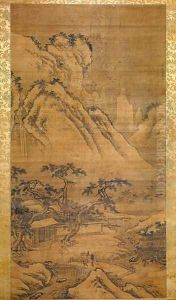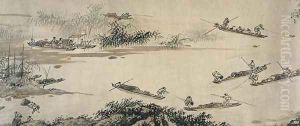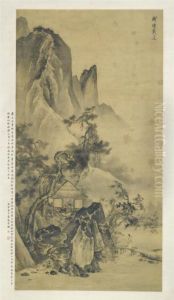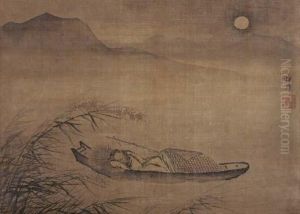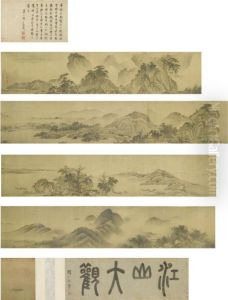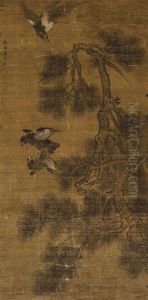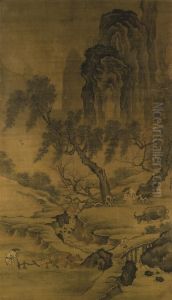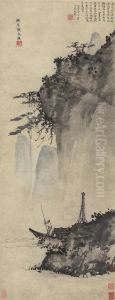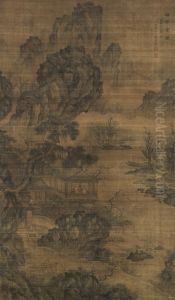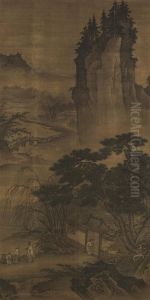Dai Jin Paintings
Dai Jin, also known by his courtesy name Zijing, was a prominent Chinese painter during the early Ming Dynasty. He was born in Qiantang (present-day Hangzhou, Zhejiang province) in 1388. Dai Jin is often recognized as the founder of the Zhe School of Ming dynasty painting, which was characterized by its vigorous and bold style, contrasting with the more gentle and refined manner of the Wu School that was also popular at the time.
Dai Jin's early life is not well-documented, but it is known that he initially failed the imperial examinations, which led him to pursue painting as a profession. He traveled to the capital, Nanjing, to seek opportunities, and his talent soon brought him recognition. His skill in painting landscapes, in particular, gained him patronage among the literati and officials of his time.
Throughout his career, Dai Jin was influenced by past masters like Huang Gongwang and Wang Meng, whose works he studied extensively. However, Dai Jin's own style diverged significantly from the more subdued approach of these earlier painters. His landscapes were marked by dramatic compositions, vigorous brushwork, and a strong sense of dynamism. He often depicted towering mountains, sweeping rivers, and vast expanses, imbued with a sense of grandeur and power.
Despite his success, Dai Jin's life was not without controversy. His bold approach to painting sometimes drew criticism from his contemporaries, who occasionally accused him of lacking refinement. Additionally, his later years were marred by personal tragedy, including the loss of his son, which deeply affected him and influenced his work.
Dai Jin died in 1462, leaving behind a legacy that had a lasting impact on Chinese painting. His influence extended well beyond his lifetime, as the Zhe School continued to be a dominant force in Chinese painting for centuries. Today, Dai Jin is remembered not only for his artistic contributions but also for his role in shaping the course of Chinese landscape painting during the Ming Dynasty.
